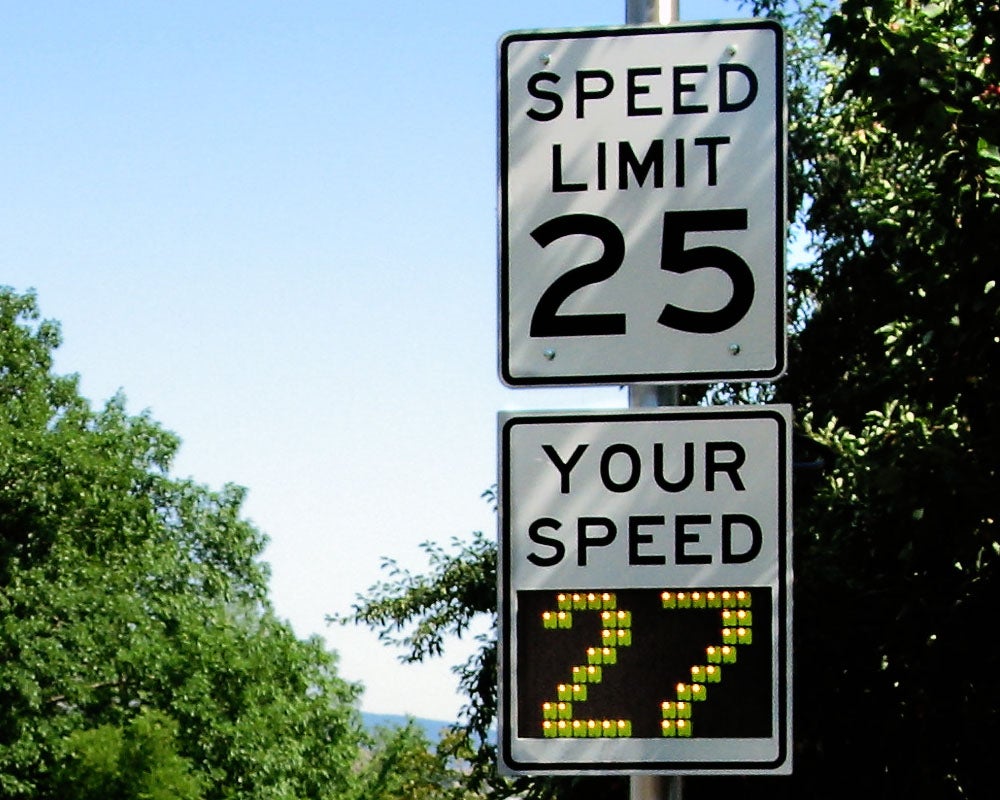Bill to give local cops speedometers on Harrisburg’s radar

In Pennsylvania, local cops are armed with all sorts of guns. The standard issue at many police departments includes both a .40 caliber Glock pistol and a stun gun. Members of municipal SWAT teams will complement those with tactical shotguns, various AR-15 models, and the occasional sniper rifle.
But there’s one kind of gun local law enforcement can’t use: radar.
Pennsylvania is the only state in the U.S. that does not allow county or municipal police to use radar guns to clock speeders and issue tickets. Only the Pennsylvania State Police are allowed to use a technology deemed safe and simple enough for baseball scouts and carnival amusements in the Keystone State.
A pair of bills that passed out of the state Senate transportation committee on Wednesday aim to change that.
Senate Bill 251, introduced by Sen. Randy Vulakovich (R-Allegheny) would let any municipality police force start using radar or LIDAR (a similar, laser-based technology) with the passage of a local ordinance. There are requirements for the guns to be calibrated and the local officers trained by state police, but little else in terms of regulation. As far as legalization bills go, SB 251 is about as simple and straightforward as they get.
But if Vulakovich’s approach strikes some legislators in Harrisburg as bit too sudden and direct, there’s radar legalization-lite bill, too: SB 279, introduced by Sen. John Rafferty (R-Bucks/Montgomery/Berks), who chairs the state senate transportation committee, and Sen. Thomas McGarrigle (R-Chester/Delaware).
Rafferty spokesman Nolan Ritchie described SB 279 as a “compromise bill.” It allows local cops to use radar guns, but with a few more limitations and regulations. First, the bill is limited to counties of the first, second, second A, or third class could use the guns, meaning only police departments in the 17 counties with populations above 210,000 could get speedometers.
SB 279 would only allow full-time officers to use the technology, preventing townships from hiring and parking part-timers to man speed traps. Compared to SB 251, it also places more strenuous reporting requirements on local departments opting to use speedometers.
Both bills require jurisdictions using the radar guns to put up “warning signs” near their borders on the “main arteries entering that political subdivision.” Just what the signs must say or how many they need to be isn’t stated.
Both bills also limit how much money localities can raise from speeders caught by radar guns based on a percentage of the locality’s budget (or police department’s budget): 20 percent in Vulakovich’s bill and 5 percent in Rafferty/McGarrigle’s.
Those provisions are aimed at bill opponents like the National Motorists Association, which argues that the radar bills amount to little more than sneaky tax schemes on drivers.
“These bills will spawn a huge increase in speedtraps [sic] in cash-strapped municipalities desperate for more money at the expense of real highway safety,” wrote Tom McCarey in an emailed NMA statement. NMA say that speed limits across the Commonwealth are set too low, below the 85th percentile speed used a a rule of thumb by highway engineers for setting limits. The 85th percentile speed rule essentially says that speed limits should be set at the speed up to 85 percent of drivers would drive in free flowing traffic (with the remaining 15 percent driving faster). According to NMA, lower speeds plus more efficient enforcement tools would make “citing drivers for ‘speeding’ like shooting fish in a barrel,” thus filling municipal coffers with ill gotten revenues.
Nonsense, says Ritchie, pointing to National Highway Traffic Safety Administration data showing that Pennsylvania had both 3rd highest absolute number of speeding-related fatalities and the 3rd highest percentage of speeding-related fatalities to total fatalities in the nation in 2013. Given that so many major arteries and other high-speed roads are patrolled by local law enforcement, Ritchie argued, it only makes sense to equip them with the tools to better enforce speeding laws in the hopes of reducing the body count.
The bills are backed by a “Radar Coalition” made up of the Pennsylvania State Mayors’ Association, the Chiefs of Police Association, and a number of other local law enforcement and government associations. On its website, the Radar Coalition contends that worries that radar guns would be used as revenue generators are misplaced, noting that out of a $114.50 speeding ticket, $80.30 goes to the Commonwealth (the rest is split between the county and municipality).
The NMA also argue that the speedometers are “notoriously inaccurate.” Both bills require the guns to be calibrated and tested before use.
Late last year, a version of Vulakovich’s bill passed the Senate 47-3, but didn’t make it out of the House before the legislative session ended.
WHYY is your source for fact-based, in-depth journalism and information. As a nonprofit organization, we rely on financial support from readers like you. Please give today.




